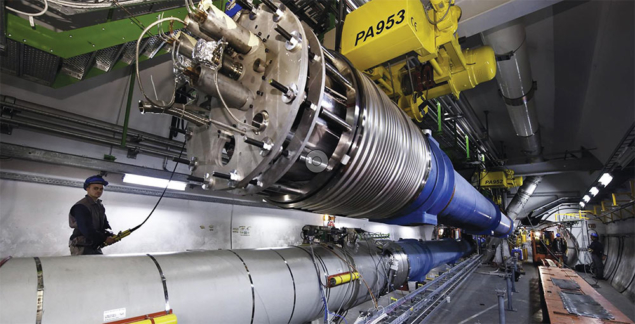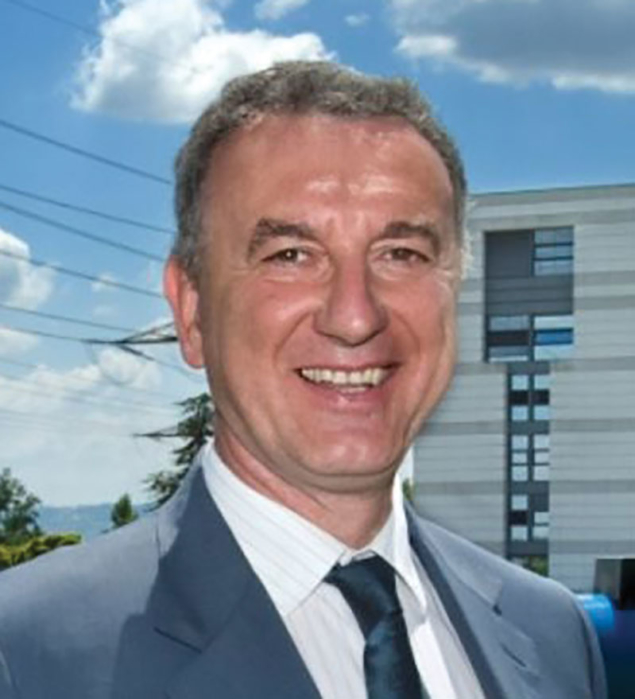The switch-on and operation of the LHC bring vital experience to its upgrade and future colliders.

When the Large Hadron Collider (LHC) started up a decade ago, on 10 September 2008, those of us who had been involved in designing and building the machine were extremely happy. I was in the CERN control centre that day, as was my predecessor, Romeo Perin, who first led the study for the LHC magnet design. Also present was Carlo Rubbia, without whose vision and battling spirit we would not have the LHC today, along with other former CERN Directors-General: Herwig Schopper, under whom initial discussions and workshops took place; Christopher Llewellyn-Smith, who got the LHC approved and secured international collaboration; Luciano Maiani, who took the decision to close LEP to make way for the LHC; and Robert Aymar, who saw the LHC to first beam.
That more than 300 journalists were present made it even more remarkable. CERN opened up to the world as it never did before and news of the event reached more than a billion people (see “The day the world switched on to particle physics“). But for many of us, our heads were already in the future, thinking about what was then simply called the LHC upgrade.
The first paper proposing a luminosity upgrade of the LHC was written in 1994 – the year the LHC was approved – and was inspired by Giorgio Brianti, who led the LHC design effort until the baton passed to Lyn Evans in 1993. He envisaged the benefits from a future superconductor, made of niobium tin rather than the niobium-titanium used in the LHC dipoles, to increase the luminosity of the LHC. Later, I proposed that INFN carry out research on this conductor and I have worked on the high-luminosity LHC (HL-LHC) ever since.

From a technical point of view, the LHC was a turning point in collider design, demanding a vast quantity of superconducting magnets with unprecedented field strengths. The past 10 years has also taught us that the machine is very well designed indeed (thanks Lyn!). The LHC works so well, in fact, that it’s easy for operators to forget that it is a superconducting machine. I realised immediately when those first protons made their way around the ring that the LHC is, as we say in Italian, “bionic”: it can do things beyond our expectations.
But we also learned, nine days later, when the breakdown of an electrical interconnect led to significant damage to one section of the machine, that the LHC is very fragile. This we will never forget: we have to be careful and we have to be humble, as a machine of this scale and complexity can stop working at any moment. The incident on 19 September happened in an interconnect between two magnets; it was not a technical difficulty but one of the LHC’s innumerable complex interfaces that tricked us. Bad as it was, we could repair it in a reasonable time period. Had we made a technical mistake concerning the superconductor itself, or the basic magnet design, it would have been a potential show-stopper.
The LHC is so complicated that it’s impossible not to make mistakes. What’s important is that we learn from them. Not only did we learn how to repair and to react very fast, we also learned how to work cooperatively. It was a healthy sociological exercise for CERN, where, like in any large organisation, it is easy for people, divisions and departments to insulate themselves from others. After the incident, the spirit of collaboration has clearly been stronger.
This is definitely the case for the HL-LHC, where we are working not only on how to produce higher luminosity, but also on how to make it the most effective for the LHC experiments. In addition, and in contrast to the LHC, which was first approved and then sought partnership, HL-LHC has been a partnership with other institutions since the very beginning. It is another good lesson, and one that paves the way for a future supercollider beyond the LHC.
We are now exactly halfway through the HL-LHC programme, which was set up as a design study in 2010, approved with full budget in 2016, and will start operating in 2026. Now we have to complete the second half of the journey to generate a luminous future for our young colleagues. I will be long retired when the HL-LHC switches on, but I expect that, when it does, the CERN control centre will once again be a scene of celebration.







